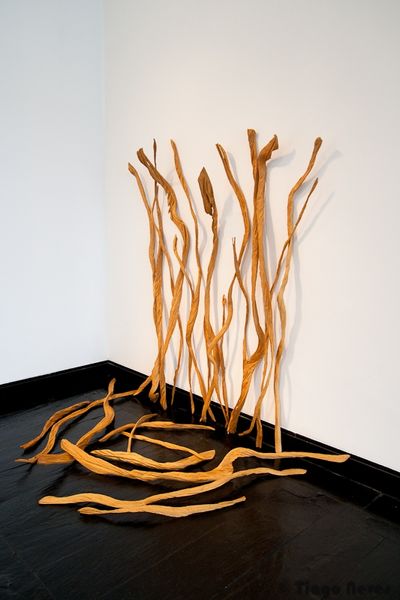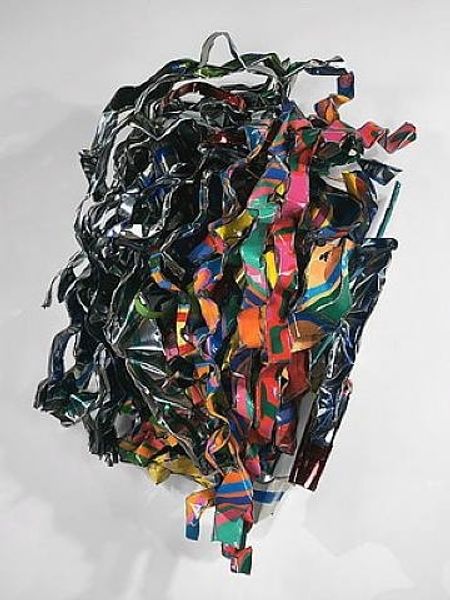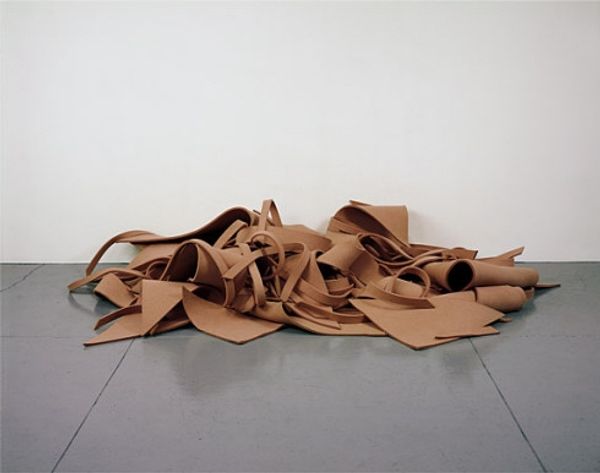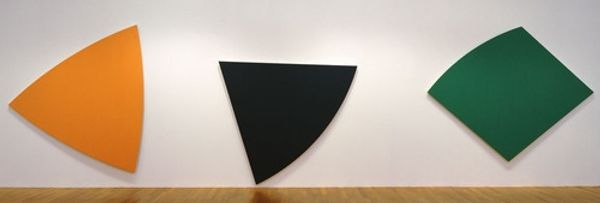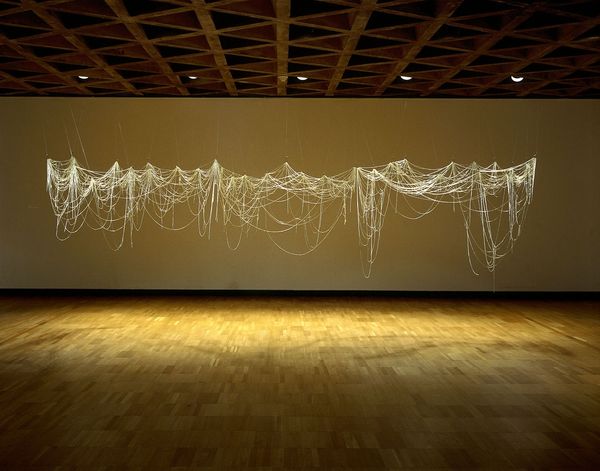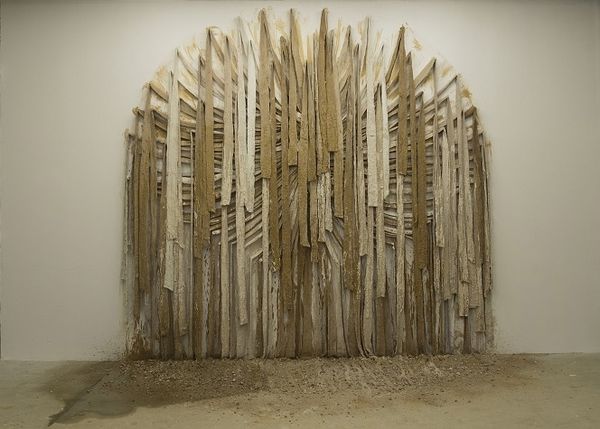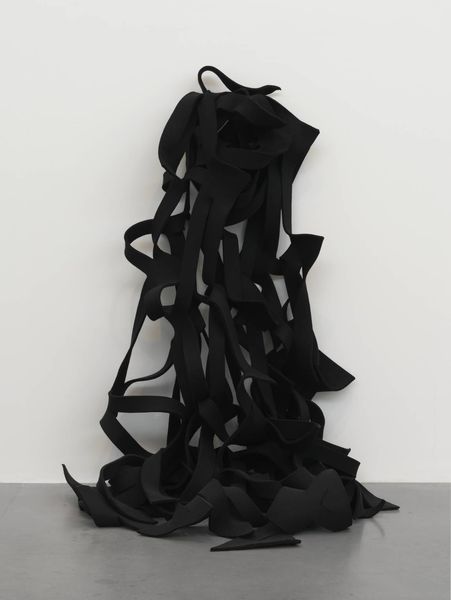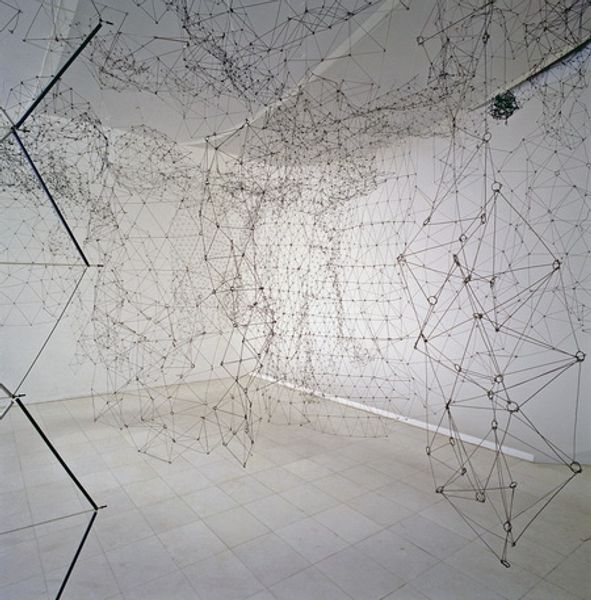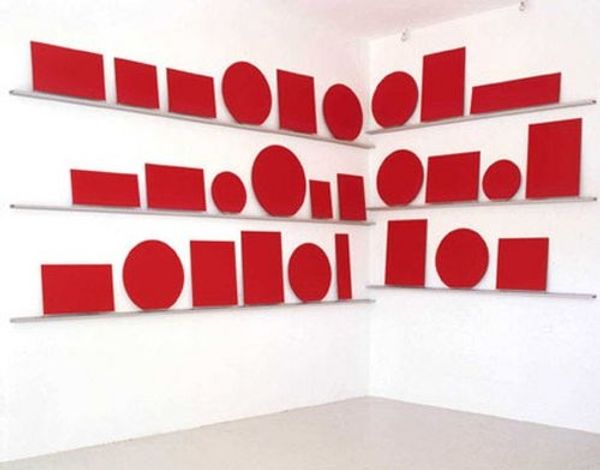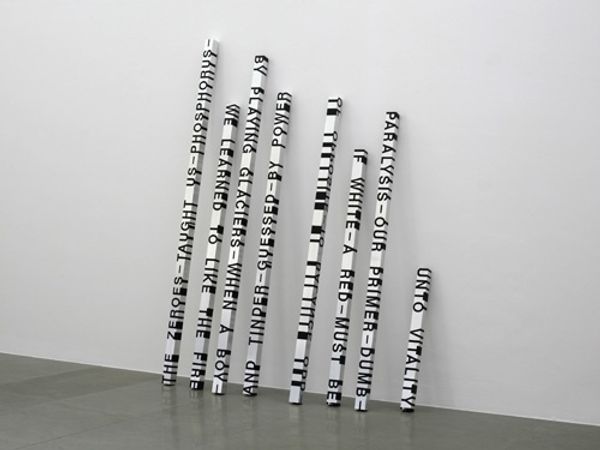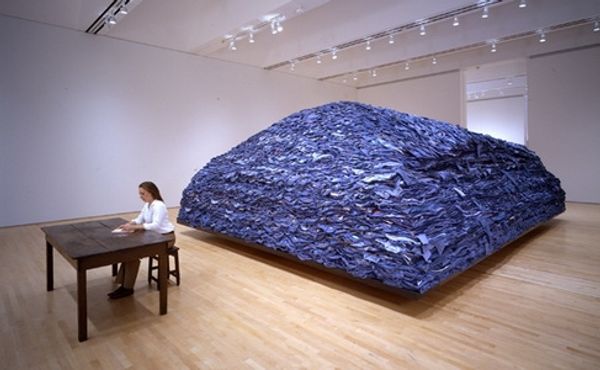
mixed-media, sculpture, installation-art
#
abstract expressionism
#
mixed-media
#
conceptual-art
#
abstract form
#
sculpture
#
installation-art
#
abstraction
#
expressionist
Copyright: Cornelia Parker,Fair Use
Curator: We're looking at "Heart of Darkness," a piece by Cornelia Parker, classified as mixed-media installation art. Immediately, I am struck by its dramatic, almost oppressive presence. It seems to defy gravity. Editor: My initial impression is the incredible amount of labor involved. Look at all those suspended elements. I wonder about the process of making this – the careful arrangement and balancing, the sheer quantity of material. What can you tell us about that? Curator: From a symbolic perspective, the suspended dark forms remind me of descent and fragmentation, mirroring Joseph Conrad's narrative themes. There's a haunting echo of collapse. Each individual piece, despite its darkness, contributes to the overall form, creating a tapestry of connected shadows. Editor: It's crucial to consider what exactly these individual components are, though, isn't it? Are they reclaimed wood, metal scraps, some form of charred remains? It drastically changes the social implications based on what exactly it's built out of and how those components have been recontextualized. If Parker's using debris from a construction site, it speaks to urban decay and a system of perpetual demolition/reconstruction... Curator: It's possible these individual shapes could also suggest broken systems, fractured narratives and shattered ideals of post-colonial disillusionment and existential isolation. In literary interpretations of the "Heart of Darkness," one comes across a lot of symbols that relate to dark vs. light and civilization versus the "primitive". There's the darkness that overtakes when people forsake civility. There is a constant negotiation and tension in the composition. Editor: Indeed. And materially speaking, even if they are intentionally designed to be uniform elements made to resemble dark abstract expressionist slashes, that changes the dialogue completely from found material! We can think about what kind of factory and labor produces uniform products made to evoke the aesthetic of expressionism, abstract form, expressionist sensibilities, or simply "darkness." I suppose it's that ambiguity that makes this such a compelling work. Curator: Precisely. This ambiguity serves as an interpretive springboard for individual reflection, allowing one to question, explore, and re-evaluate collective meanings tied to symbols of darkness. I leave feeling pensive and full of contemplation. Editor: Agreed. And with a new appreciation for the often unseen work involved in the production and composition of art, whatever the original materials may be.
Comments
No comments
Be the first to comment and join the conversation on the ultimate creative platform.


